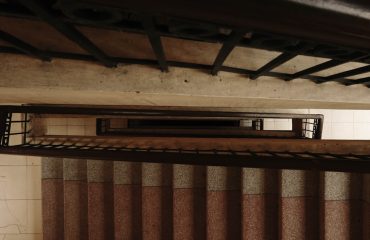body {
font-family: sans-serif;
line-height: 1.6;
}
h1, h2, h3 {
color: #333;
}
h1 {
font-size: 2.5em;
}
h2 {
font-size: 2em;
}
h3 {
font-size: 1.5em;
}
The construction industry is undergoing a significant transformation, driven by the need for sustainable practices, faster construction times, and cost-effectiveness. Hybrid construction, a revolutionary approach that blends traditional building methods with modern techniques, is at the forefront of this change. This innovative approach offers a powerful solution to many of the challenges facing the industry today. Let’s delve into the fascinating world of hybrid construction and explore its various facets.
Understanding the Core Principles of Hybrid Construction
Hybrid construction, at its essence, involves combining different materials and construction methods to create a structure. This might involve integrating traditional materials like timber or brick with modern materials such as steel, concrete, or cross-laminated timber (CLT). The goal is to leverage the strengths of each material and technique, maximizing efficiency, sustainability, and overall performance. For example, a building might utilize a steel frame for structural support, while the exterior walls are constructed from prefabricated timber panels. This allows for rapid construction, reduces on-site waste, and provides a unique aesthetic.
Popular Hybrid Construction Methods: A Closer Look
Several popular hybrid construction methods are gaining traction in the industry. One prominent example is the combination of steel frames with precast concrete elements. Steel provides the structural skeleton, while precast concrete panels form the walls and floors, offering speed, precision, and improved quality control. Another common approach involves using timber frames with infill walls made of alternative materials like straw bales or hempcrete. This approach enhances the building’s thermal performance and reduces its carbon footprint. Furthermore, the integration of modular construction with traditional site-built elements is becoming increasingly prevalent, streamlining the building process and minimizing disruption.
Advantages of Embracing Hybrid Construction Techniques
The benefits of hybrid construction are manifold. Firstly, it offers significant time savings compared to traditional methods. Prefabrication and modularity reduce on-site construction time, accelerating project completion. Secondly, hybrid techniques often lead to cost reductions. Optimized designs and reduced labor costs contribute to a more economical building process. Thirdly, sustainability is a key advantage. The use of recycled materials and the integration of energy-efficient designs contribute to environmentally friendly buildings. Fourthly, hybrid construction enhances design flexibility. The combination of materials allows for greater creative freedom, enabling architects and engineers to explore innovative designs and tailor buildings to specific requirements. Finally, improved quality control is a significant benefit. Prefabrication allows for precise manufacturing in controlled environments, minimizing errors and ensuring high-quality construction.
Challenges and Considerations in Hybrid Construction Projects
Despite the numerous advantages, hybrid construction projects also present certain challenges. One major hurdle is the need for specialized expertise and skilled labor proficient in handling diverse materials and techniques. Effective coordination between different contractors and suppliers is crucial for seamless project execution. Another challenge relates to the design phase, which requires careful consideration of material compatibility and structural integrity. Moreover, regulatory approvals and compliance with building codes can be more complex for hybrid structures, requiring detailed documentation and rigorous inspections. Finally, the initial investment in specialized equipment and technology can be higher compared to traditional methods, although this is often offset by long-term cost savings.
Future Trends and Innovations in Hybrid Construction
The future of hybrid construction is bright, with ongoing innovations pushing the boundaries of what’s possible. The increasing adoption of Building Information Modeling (BIM) and digital fabrication techniques will enhance design efficiency and precision. The development of new, sustainable materials, such as bio-based composites and recycled materials, will further improve the environmental performance of hybrid structures. Furthermore, advancements in automation and robotics will streamline the construction process, making it faster, safer, and more efficient. We can expect to see more widespread adoption of off-site manufacturing and modular construction, leading to the creation of highly sustainable and resilient buildings.
In conclusion, hybrid construction techniques represent a significant advancement in the building industry, offering a path towards more sustainable, efficient, and cost-effective construction practices. While challenges remain, the numerous advantages and ongoing innovations make it a compelling approach for shaping the future of building design and construction.
Tags: Hybrid Construction, Sustainable Construction, Modern Construction, Building Techniques, Green Building




